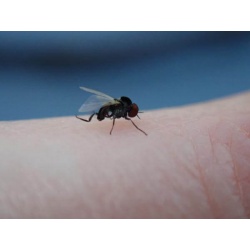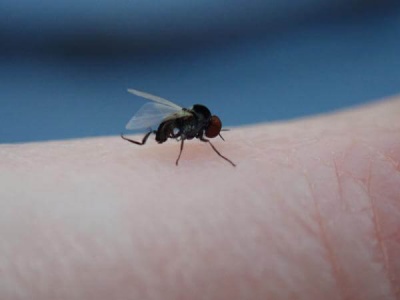
When will the outbreak of little black bugs end?
Mike e-mails: "This is the largest, most annoying outbreak of these little black bugs I have ever seen! They seem to disregard Deep Woods Off and yard foggers and are on you the second you step outside! We finally started a wood fire in our yard to get some smoke rolling and that actually kept them at bay in our small area - but I noticed people camping at Highlandville were breaking camp because no one could stand being outside due to them and I overheard some farmers at the Winn Coop here in Burr Oak discussing how crazy this outbreak is.
Question is, do you know of an entomologist that could shed light on whether this is a short-lived outbreak and we can expect relief from these biting bugs anytime soon - or - is this event cyclical and this is just a bad year for them? Last question - What is the best way to send them on their way for those who just can't light a wood fire?"
The Answer Person says: "The infestation of these annoying bugs has certainly been a nuisance! The good news is, they shouldn't be around much longer. The black fly -- commonly called a buffalo gnat -- has a lifespan of about 3 weeks.
Iowa State University Extension entomologist Laura Iles says, 'It is likely there are currently several species causing problems to humans, livestock and wildlife across Iowa. In Iowa, black fly adults are generally present by late-May to early June depending on temperatures. The adult flies are usually present for about 3 weeks before they die.'
Iles says it's only the females that bite, as they need the nutrients in blood to develop eggs. Although the bites are not very painful, some people react more than others with swelling and itching. Black flies are attracted to the odors of sweat and carbon dioxide, so if you've noticed them swarming your head more than normal after a run or while doing yard work, that's why.
Mosquito repellents can provide some relief as well as various kinds of essential oils or vanilla extract. What you wear can make a difference too, as Iles explains. The flies prefer to land on dark-colored surfaces and are less attracted to bright colors, so wearing colors like white and yellow and avoiding dark colored clothing, particularly dark blue, may help keep the bugs at bay."
Site designed and maintained by Iroc Web Design Services©.
Your Small Business Web Design Solutions.™


